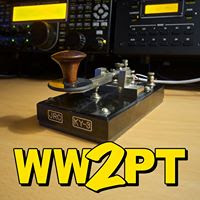Astroplanner
 I don't think I've ever registered a piece of shareware. That's because most shareware I've come across generally sucks, and even that which does not suck usually gets installed, run once or twice, then quickly forgotten. Not so Astroplanner; this program is amazing.
I don't think I've ever registered a piece of shareware. That's because most shareware I've come across generally sucks, and even that which does not suck usually gets installed, run once or twice, then quickly forgotten. Not so Astroplanner; this program is amazing.I first tried Astroplanner about two years ago (v.1.3.x) but didn't really use it. It was fairly sluggish on the Mac, as I recall, and just didn't grab me at the time. Yesterday, I decided to revisit the app, and after downloading the latest version (v.1.5.2) I was blown away at the amount of work the author, Paul Rodman, has been putting into this program (as the release notes will attest). So I sent my $25 registration fee and downloaded a bunch of the object catalogs - NGC and IC catalogs, Herschell 400, Burnham Double Stars, Caldwell objects - and have been playing around with it.
Perhaps the reason the earlier version didn't impress me is that I just didn't have a use for it at the time - I was fairly new to the NexStar 8 GPS and perfectly content finding and selecting targets from its built-in lists, plus I was only chasing Messier objects and a few NGC's from the Night Sky Observer's Guide and S&T articles. After a couple of years of looking at the same, limited number of objects, I've graduated to more challenging targets and spending a lot more time planning my sessions around specific types of objects. For example, I might spend an entire night observing only open clusters, or globulars, or planetary nebulae, or whatever. Astroplanner makes it easy to generate a list based on numerous criteria (i.e., all Planetary Nebulae from the NGC Catalog located in Lyra, Cygnus, Vulpecula, Saggita, Delphinus and Aquilia, 10th magnitude or brighter, with declination greater than +10 deg). Click, click, done - I have a nice list of targets for the night, and with the telescope connected, another click puts the target in my eyepiece (well, some of the time...).
A nice feature is the ability to download images from the Digital Sky Survey (DSS), cache them to disk, and display them along with the other data. This can be very helpful if you're not sure if what you're looking at is actually the desired object - just check the image and compare!
Once your target list is complete, Astroplanner can print various forms, including a nifty Observation Form which places various data at top, DSS images below that, and an observation log section with sketching circles and blank fields for notes and details.
Control of the Sirius mount is very straightforward; perform the initial alignment process as usual, then just plug in the cable, set the mount to RS232C control, and it's done. Nothing fancy, just a convenient way to point your scope at an object with one click of the mouse, rather than having to scroll through menus and nested tables with the hand controller, looking for an object that might not even be in the list.
I'll add more notes once I get the chance to use Astroplanner in the field (or on the deck, as the case may be).







<< Home